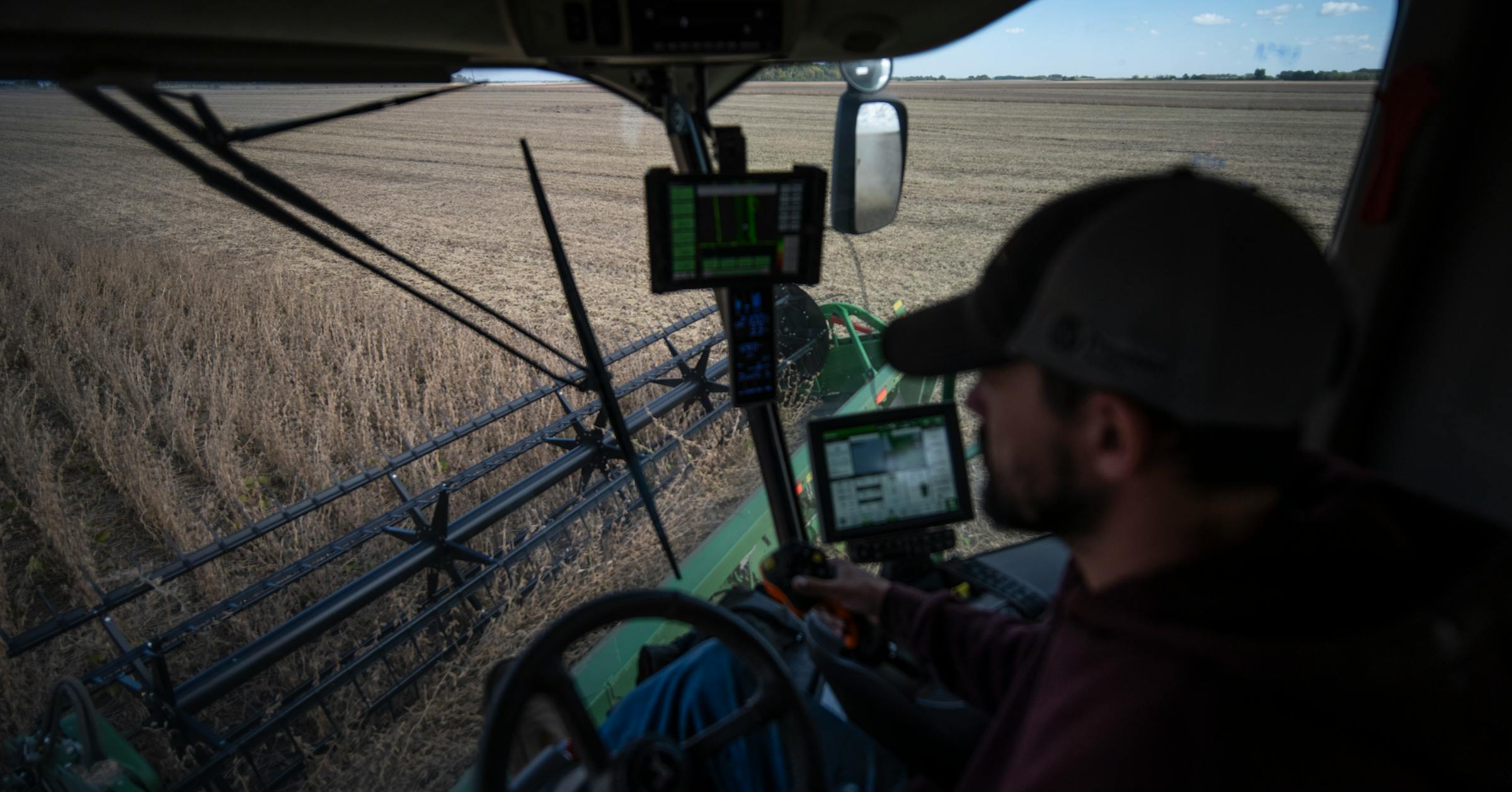Copyright Star Tribune

Farmers are already feeling financial stress, but they hope a deal might alter what they fear is a shift that will result in permanent lower demand for U.S. soybeans. By Christopher Vondracek, Brooks Johnson and Jp Lawrence The Minnesota Star Tribune October 29, 2025 at 5:35PM James Fultz harvests a soybean field at his family farm in Tracy on Oct. 7. Fultz has taken a teaching job to buttress his finances should the soybean markets continue to tank. (Renée Jones Schneider/The Minnesota Star Tribune) “I’ll be honest, I kind of trusted him that he would be able to work out these trade deals way sooner,” said Jay Fultz, a Cottonwood County farmer who finished his harvest earlier this month. Jay Fultz empties freshly harvested soybeans into a semi-truck to be brought to the gain elvator at the Fultz family farm in Tracy. (Renée Jones Schneider/The Minnesota Star Tribune) Shadow of past farm crisis Looming behind the current crisis is what happened to wheat farmers a generation ago when President Jimmy Carter’s embargo of the Soviet Union in 1980 permanently curtailed wheat acres in the Upper Midwest. There never was that one big customer again. Related Coverage That’s what soybean farmers are worried about now — that while new markets will be found, they won’t add up to the heft of China. In 2023, Minnesota exported nearly 4 million metric tons of soybean meal, which is largely used to feed hogs. Many grain analysts are wondering, where does that go without China? “There’s a secular risk that this is not going to cycle back up,” said Megan Roberts, an agricultural economist with Compeer Financial in Mankato. “There are absolutely discussions right now we’ve fundamentally had a change to the supply-and-demand of this commodity.” China seemed the answer for this century It wasn’t many years ago that opening up trade with China was seen as the antidote to soybean farmers with fresh memories of the devastating 1980s, when crop farmers went bankrupt at rates unseen since the Great Depression. When Gov. Arnie Carlson went to China on a trade mission in 1998, he brought along a soybean farmer, Don Nickels. His son Audi Nickel now farms and teaches agriculture at the high school in Mountain Lake. “[Dad] was frustrated just like anybody else and realized, ‘Hey, this is a way for me to make an impact on every soybean farmer — not just in southwestern Minnesota, but all over the country,’” Nickel said. Nickel said his father, who died in 2022, watched with dismay during Trump’s first term when a trade war with China cost American soybean farmers an estimated $20 billion in profits. Now, he wonders if his taciturn father, who was slow to criticize politicians, would be more vocal in his anger. A combine harvests a soybean field that is part of the Fultz family farm in Tracy. (Renée Jones Schneider/The Minnesota Star Tribune) Benya Kraus, president of the Southern Minnesota Initiative Foundation, said she’s witnessed on her own family farm outside Waseca a need to cut back on expenses. Car dealerships, fertilizer sellers, even food shelves needing donations all are feeling reverberations. “When our farmers are hurting and need to tighten their financial wallet, the whole rural community feels it,” Kraus said. New customers mean infrastructure costs There’s some hope for domestic use of soybeans: biofuels. “There’s no place else to go in the world to replace China,” said John Griffith, executive vice president of ag business at CHS. Blending all diesel used on American highways with 2% soybean-based biodiesel could fill the China gap, Griffith added. The soy industry sees national biodiesel policies as the most effective lever to pull to increase demand for soybeans. But that would require political support in Washington — and years, if not decades, to fully develop. “There was tremendous growth,” Usset said. In the early 2000s, soybeans even eclipsed corn briefly for number of acres planted across Minnesota. By 2024, 7.4 million acres were planted. But, just like the first trade war, the Chinese embargo has raised existential questions about soybeans: Minnesota grows more than the U.S. uses domestically. Should it? “We can’t utilize all the soybeans produced in this country,” said Pauline Van Nurden, an economist with the University of Minnesota Extension. She added that building out a partner to take China’s place would take years. Politics shades farmers’ view of solutions Back in Tracy, Fultz’s father, Dennis, is a lifelong Republican who voted for Kamala Harris last November. He says Trump undid decades of goodwill with China. “The foreign buyers for corn, soybeans, pork, beef, they will go to the other places in the world,” Dennis Fultz said.



